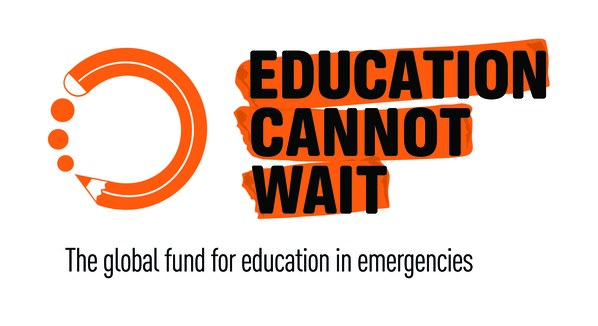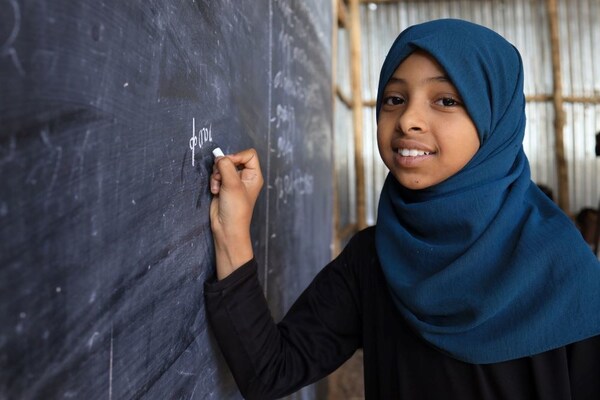Nearly One Quarter of a Billion School-Aged Children Impacted by Crises Worldwide Require Urgent Support to Access Quality Education: An Increase of 35 Million Over 3 Years
 |
On International Day of Education, Education Cannot Wait launches a new Global Estimates Report, sounding the alarm on growing needs that are outpacing education aid funding.
NEW YORK, Jan. 24, 2025 /PRNewswire/ -- The number of school-aged children in crises worldwide who require urgent support to access quality education is rising rapidly, according to a new Global Estimates Report issued today by Education Cannot Wait (ECW), the global fund for education in emergencies and protracted crises in the United Nations. The new report reveals that this number has increased by an estimated 35 million over the past three years, reaching 234 million by the end of 2024.

Out of the 234 million crisis-impacted children and adolescents identified in the report, 85 million (37%) are completely out of school.
Compounding conflicts, coupled with more frequent and severe extreme weather and climate events, jeopardize the present and future of this rapidly growing number of children. Refugees, internally displaced children, girls and children with disabilities are among the most affected, the report states.
While needs are increasing, the new report highlights that after several years of significant growth, humanitarian education aid funding has now stagnated. The share of total Official Development Assistance (ODA) allocated to education has also declined in recent years. According to the United Nations, there is a US$100 billion annual financing gap to achieve the education targets in low- and lower-middle income countries outlined in the Sustainable Development Goals (SDGs).
"On this International Day of Education, we are sounding the alarm. Nearly a quarter of a billion girls and boys in crises worldwide are being denied their basic right to quality education. Additional funding by public and private sector donors is urgently needed to provide them with the protective, quality learning opportunities they deserve. Unlocking their potential to thrive and become positive changemakers is the most transformative investment we can make to accelerate progress towards achieving the SDGs," said Yasmine Sherif, Executive Director of Education Cannot Wait.
The report emphasizes that exposure to armed conflict, forced displacement, climate-induced hazards, epidemics and socio-economic challenges poses long-term threats to children's health, education and well-being. It further highlights that crises are becoming increasingly intense, widespread and interconnected. Over the past five years, the number of global conflicts has doubled with 50 countries experiencing extreme, high or turbulent levels of conflict in 2024.
A Silent Global Emergency
Out of the 234 million crisis-impacted children and adolescents identified in the report, 85 million (37%) are completely out of school. Among these 85 million:
- 52% are girls.
- 17% (i.e. 15 million) are refugees or internally displaced.
- Over 20% are children with disabilities.
Five protracted crises – Sudan, Afghanistan, Ethiopia, the Democratic Republic of the Congo, and Pakistan – account for nearly half of these out-of-school children.
Nearly one-third of crisis-affected children of primary school age are out of school (52% are girls). Access to secondary education is equally dire: 36% of children of lower-secondary school age and 47% of upper-secondary school-aged children are unable to access education.
Even when they are in school, many children affected by crises are falling behind. Only 17% of crisis-affected primary school-aged children achieve minimum reading proficiency by the end of primary school. Notably, girls in primary school consistently outperform their male peers, comprising 52% of this group.
About half of the crisis-affected school-aged children globally live in sub-Saharan Africa. The report identifies the subregion as facing the most complex challenges in guaranteeing every child's right to education.
The report also underscores how climate change is amplifying the frequency and severity of extreme weather events, pushing even more children out of school. In 2024, heavy flooding devastated regions of the Sahel, East Africa and Central Asia, while severe droughts gripped Northwestern and Southern Africa, as well as parts of the Americas. The compounded effects of these crises have exacerbated food insecurity and driven record levels of displacement globally.
To address these interconnected challenges, ECW and its strategic global partners are calling for US$600 million in additional funding to deliver on the goals outlined in the Fund's four-year strategic plan. With increased financing from public donors, the private sector and high-net-worth individuals, ECW and its partners aim to reach 20 million crisis-affected children with the safety, opportunity and hope of a quality education by 2026.
以上新聞投稿內容由 PR Newswire 美通社 全權自負責任,若有涉及任何違反法令、違反本網站會員條款、有侵害第三人權益之虞,將一概由 PR Newswire 美通社 承擔法律及損害賠償之責任,與台灣產經新聞網無關。
















